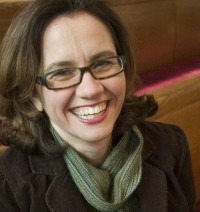Ten church models for a new generation
I’m in a lot of conversations about why the denominational
church isn’t working. In some ways, I think of our churches like a crop of corn
that was planted at the same time. That field produced corn for 50 years—so much
wonderful corn that many of us were fat and happy. In our abundance, we forgot
to diversify and plant new fields. Now the corn is coming to the end of its
season, all at the same time.
In my denomination (PCUSA), 90% of our members are white and
most of them are over the age of 60. Many of our churches are rural and many of
the buildings were constructed in the 1950s. After 60 years of dutiful service, the structures are too large, too inefficient, and require too much maintenance for smaller,
aging members to keep up with. We're ministering in a country where younger generations are much more diverse and many of them move into urban areas. Many congregations plan to cut staff (including
the pastor) and hold on to the building until there’s only one person left standing. In fact, right now, half of our churches cannot afford pastors, so it's not difficult to imagine that we might be closing them in the next 20 years.
The crop may be coming to end of its season, but the ground is not fallow. What are some other options? What about the communities
that are working? What about new communities? They tend to be small (much like our existing churches) but
they often don’t have the real estate and endowments to keep them going. They have to think of other ways to create space as well as other funding sources. I’m
going to list these… some are conservative, some are liberal, some have hardly
any beliefs at all. I’m giving them to you as models, not because I agree with
the theological content (or lack thereof), but because they’re worth
exploring.
1)
Large churches plant new communities. Using
money from a large congregation and denominational funding, a church is
planted. That seems to be what happens the most in our denomination, and it
seems to be our trustiest default. The problem? It’s usually conservative,
evangelical big-steeples who are in the planting business. If a church-planter
does not fit that theological mold, she’s out of luck.
2)
Multi-cultural congregations. Often churches
realize that they can’t connect with their changing neighborhoods, so they
start or welcome another immigrant congregation within their existing church
structure. This works best when it’s not seen as a landlord/renter
relationship, but a mutual ministry.
3)
Neo-monastic communities. You can see a list of
communities that are connected with the Simple Way.
Missio Dei of Minneapolis is a community that I often here about. I’ve also heard Wayne Meisel
of the Bonner Foundation talk about wanting to plant 45 Houses of Hospitality.
I don’t know too much about this… I’m trying to set up a meeting with him… so
I’ll keep you posted.
4)
Church/business hybrids. The most popular hybrid
in our neighborhood is Ebeneezer Coffeehouse/National Community Church. I
have also seen an emerging church community where the women (the community was
mostly women) make and sell jewelry to support the church.
5)
Pastor/business hybrids. Kirk Jeffery is a pastor
who is also a coffee roaster. You can learn about what he’s up to and order
some coffee here. I have friends who want to follow in the monastic tradition of combining wine
and beer making with ministry (if you’d like to invest in start-up costs, I can
connect you!).
6)
Art churches. The Church of Craft is
interesting (the video is pretty good at explaining it). They meet in an Etsy lab in Brooklyn, and different chapters have
sprung up all over the country. These are churches that are formed around the
knowledge that making things is often a person’s spiritual practice. There’s
also Wicker Park Grace, which met in an art gallery. Creating art, poetry and
music has become central to who they are as a commnity.
7)
Food churches. Many congregations are using
food—farmer’s markets, local food movements, etc—to connect with the community
and (in some cases) provide additional funding. You can hear Craig Goodwin talk
about how his existing congregation started a farmer’s market.
8) Non-profit/church hybrids. In a similar vein with food churches, The Common Table is a non-profit that serves food, and guests pay whatever they can afford. Western Presbyterian (the church I serve) houses Miriam's Kitchen. New members often talk about "coming upstairs." In other words, they first connected with the church through Miriam's, but then they decided to venture up the stairs on a weekend for worship.
9) Podcast churches. Revolution Church in NYC meets
in the back of a bar. They probably can’t seat more than 50 people, but they
podcast to 10,000 people. If those 10,000 people pay $10 to support the church,
they have funding to keep going. Jay Bakker co-pastors the congregation, so I’m
not sure if the model would work for everyone, but the model is worth
mentioning.
10) Internet churches. Koinonia Congregational Church and 1PCSL (1st
Presbyterian Church of Second Life) are virtual congregations on Second Life. I like these churches because in Second Life, I'm me, but taller and skinnier.
Now, you tell
me. What have I left out?






